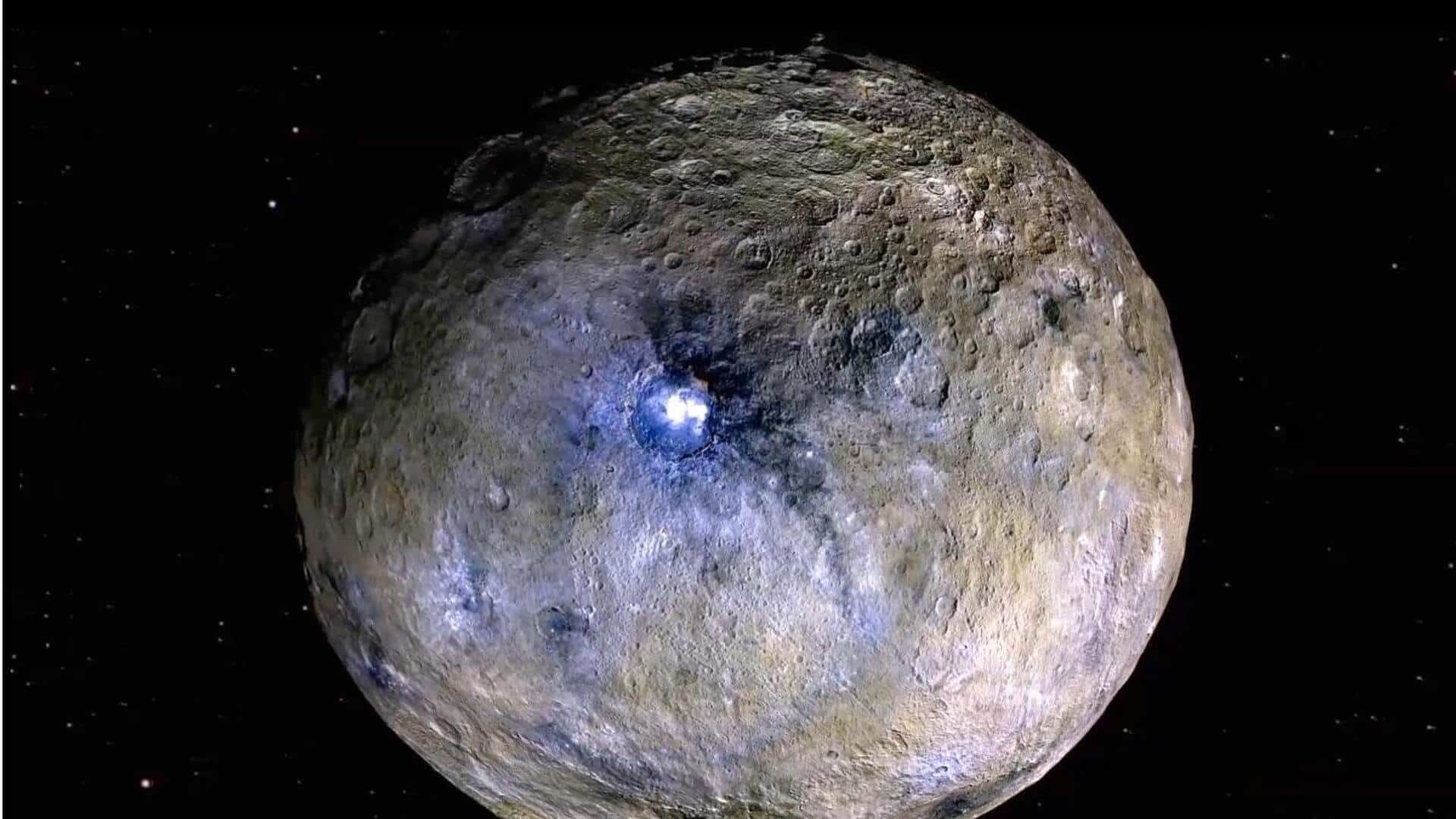
This dwarf planet might have been habitable in the past
What's the story
NASA's recent research suggests that Ceres, the largest object in the main asteroid belt between Mars and Jupiter, may have had a long-standing source of chemical energy. The study indicates that this dwarf planet could have possessed the right types of molecules to support some microbial metabolisms. While there's no direct evidence of microorganisms ever living on Ceres, these findings bolster theories about its potential habitability.
Mission insights
Dawn mission's findings on Ceres
NASA's Dawn mission, which ended in 2018, had previously discovered that the bright areas on Ceres are mainly salts from an underground liquid. A 2020 study revealed this liquid came from a massive saltwater reservoir beneath the surface. The Dawn mission also found carbon molecules on Ceres, an essential component for microbial cells. These discoveries make up three key elements of habitability: water, carbon molecules, and now a potential source of chemical energy.
Research findings
How did researchers determine this?
The new study, published in Science Advances, created thermal and chemical models of Ceres's interior over time. It found that around 2.5 billion years ago, Ceres's subsurface ocean may have had hot water with dissolved gases from metamorphosed rocks in the core. This heat came from radioactive decay of elements in the dwarf planet's rocky interior when it was young, an internal process common in our solar system.
Habitability potential
Implications for microbial life
Sam Courville, the lead author of the study, said that on Earth, hot water from deep underground often creates a feast of chemical energy for microbes. He added that if Ceres's ocean had hydrothermal fluid in the past, it could have big implications for its habitability. However, today's Ceres is not likely to be habitable due to its cooler temperature and lack of sufficient heat from radioactive decay to keep water from freezing.
Past conditions
Past potential for habitability
Ceres's most likely habitable period was between 500 million and two billion years after its formation, when its rocky core was hottest. During this time, warm fluids could have entered Ceres's underground water. Unlike other celestial bodies like Saturn's moon Enceladus and Jupiter's moon Europa, Ceres doesn't benefit from present-day internal heating from orbiting a large planet. This means its potential for habitability-fueling energy was mostly in the past.